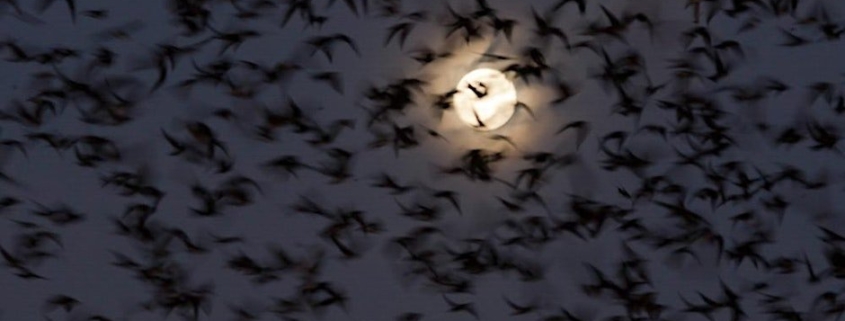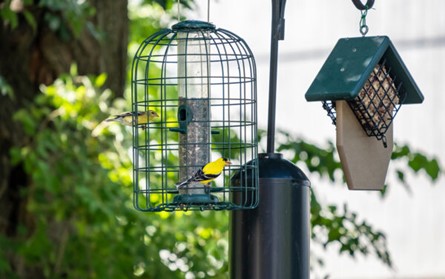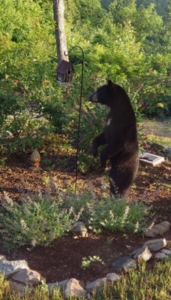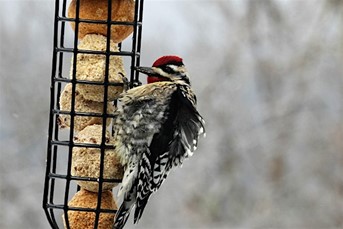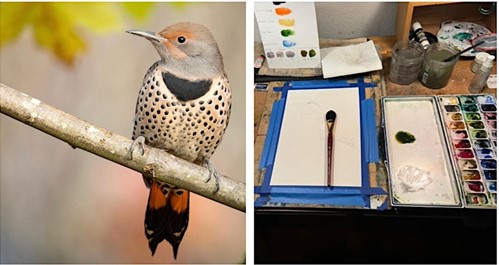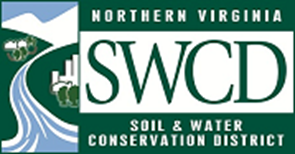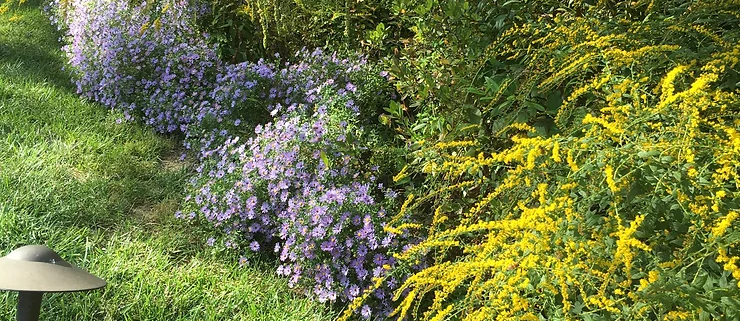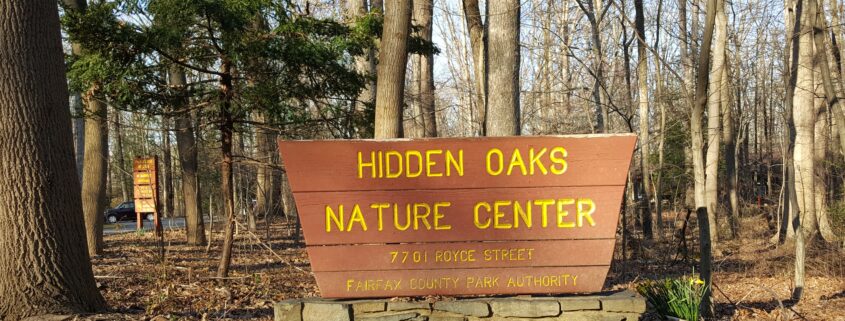Article and photos by Plant NOVA Natives
It’s fall, and most healthy plants are looking rather spent as they go dormant for the winter. But some natives are happily blooming away for the first time this growing season, catching your eye with their intense colors and soothing away year-end gardening blues.
Asters and goldenrods are usually the stars of this show, providing a beautiful color contrast with each other when planted together. Aside from their beautiful, long-lasting blooms, they are both “keystone” native plants, so named because they feed the most species of insects, butterflies, birds, and other animals in our area. Along with several other keystone plants and trees, asters and goldenrods are wildlife engines that support many local ecosystems. They are obvious choices for fall gardens.
It is encouraging if not inspiring to know that if you have access to an empty outdoor potting container or a bit of open ground, you can plant a keystone species and … help reinstitute the biodiversity of the continent! Spend ten minutes on a sunny afternoon watching what visits the blooms on your aster or goldenrod, and you will absolutely believe your efforts have made a difference.
Here are some suggestions for asters and goldenrods to add to your garden.
Asters
Aromatic Aster (Symphyotrichum oblongifolium)
Aromatic Aster has emerged in recent years as a fall gardening favorite and a great substitute for non-native mums. In the wild, aromatic aster likes dry rocky outcroppings and is considered uncommon if not rare in the Piedmont. But it has become very popular among growers these days and is rather easy to find. It is a vigorous, drought-tolerant plant that does as well in a pot as it does in the ground. Aromatic Aster gets its name from its leaves which release a balsam-like smell when crushed, which is pleasant to us and repulsive to deer. As such, the plant is very deer resistant. The plant is naturally mounded in shape and rather well behaved, especially if pruned. It is recommended not to prune an aster during its first year, but older plants respond well to a trim of approximately 1/3 of the stem length in June or July to help maximize flower production in the fall and reduce floppiness.
New England Aster (Symphyotrichum novae-angliae)
New England aster has a sturdy appearance and can grow up to six feet or more. After the first year, it can be pruned down to ½ of its stem length in June. You can also pinch back stem tips every few weeks during the winter and prune its outer stems a bit more than its inner stems to create more of a mounded shape. Monarch butterflies are particularly attracted to it as they stock up for their migration to Mexico for the winter. New England Aster is a host plant for the Pearl Crescent butterfly, one of the most common butterflies across America.
Calico Aster (Symphyotrichum laterifolium)
Calico Aster can reach a height of 1-4 feet and is also a late September bloomer, producing small, daisy-like white flower heads that gradually turn to purplish red. Flowers on one plant include both colors at the same time, which is how the plant gets its name. It is very delicate and airy in appearance when blooming, but it can be mistaken for a weed in mid-summer. Flowers attract many bees, while the leaves host the larva of the Silvery Checkerspot and Pearl Crescent butterflies. Plant Calico Aster near New England Aster or Aromatic Aster for a nice structural contrast.
Goldenrods for the Garden
There are over 40 species of goldenrod native to Virginia, most of them producing very long-lasting blooms from late summer to fall which are of special value to native bees and many other little pollinators.
Wrinkle-leaf Goldenrod (Solidago rugosa)
Wrinkle-leaf Goldenrod, also known as Rough-leaved Goldenrod or Rough-stemmed Goldenrod, is a garden favorite and rather easy to find in native plant and commercial garden centers. It features 2-5 feet long graceful arching stems that are densely loaded with small yellow flowers. In nature you will see the plant growing in large masses in open fields, but it also thrives in gardens as that get plenty of sunlight. Plant it near some blue asters for color contrast, and enjoy the result.
Zigzag Goldenrod (Solidago flexicaulis)
Zigzag Goldenrod, also known as Broadleaf Goldenrod, does not require as much sun as Wrinkle-leaf Goldenrod. It is common in local woodland settings and easy to spot with its characteristic erect, somewhat zig-zag stems that can grow from 1-3 feet tall. In addition, many backyard birds such as sparrows, goldfinches, chickadees, and wrens love to eat its seeds. Zigzag Goldenrod is an easy-care, beautiful, and beneficial choice for your fall garden, requiring little attention once it is established.
Goldenrods have been saddled with a bad reputation by people who mistakenly blame them for their allergy symptoms. It is actually ragwort species that cause the fall sneezing. As garden plants, some species of Goldenrod such as Tall Goldenrod
(Solidago altissima) can be overexuberant in the garden or look weedy. Others, though, are the perfect plant to wrap up the season, both for their color and for their contribution to our struggling local ecosystem. For more information about these and other native plants, see the
Plant NOVA Natives website.


